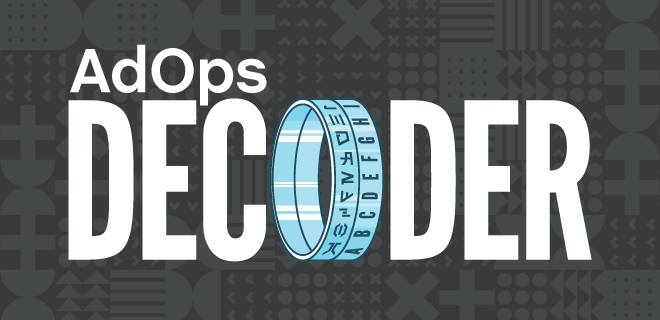
ACIF (Ad Creative ID Framework) is the IAB Tech Lab’s universal identifier for video ads. It aims to solve frequency capping issues, improve performance tracking, and streamline ad operations across platforms. Here’s why it matters.
CTV revenue is booming, hitting $33.35 billion this year—but tracking ad creative across platforms remains chaotic. Enter ACIF, the Ad Creative ID Framework, the IAB Tech Lab’s universal solution to ensure consistent tracking, better measurement, and improved ad performance.
But what exactly is ACIF, and how does it impact publishers, advertisers, and viewers?
We know, in ad tech, acronyms multiply faster than TikTok trends—and just as you’re getting a grip, there’s another one. But, here’s why ACIF matters: It simplifies ad tracking and measurement, making your job (slightly) easier.
ACIF stands for Ad Creative ID Framework, an industry-wide standard designed to assign unique identifiers to video ads across all platforms. Think UPC barcodes but for digital ads.
What Is ACIF? One ID to Rule Them All
IAB Tech Lab Advanced TV Commit Group developed ACIF to improve user experience in video advertising across platforms, including CTV. ACIF’s key component is ad registration, assigning each piece of ad creative a unique code, much like the UPCs that grace the back of consumer products in a grocery store.
In a store, UPCs are used to keep track of inventory; similarly, ad registration monitors and tracks video advertisements across platforms. This can improve real-time ad placement and generate more accurate reports that simplify ad ops on the buy and sell side. It can also reduce costs.
“It’s really important to have a highly accurate understanding of your creative because it contributes so much to explaining why a campaign is performing. We’ve found that very small differences in a 30-second or 15-second spot can lead to significant differences in performance,” explains Kevin Krim, CEO of EDO.
ACIF is designed to accomplish the following business requirements:
- Frequency capping and management
- Competitive separation for brands
- Cross-platform campaign measurement
- Simplified campaign reconciliation across different mediums and providers
- Improved campaign ROI by mitigating spend waste and better campaign management
- Accurate accounting for talent payments
The Cost of Chaos: Why Universal IDs Matter
SSPs currently assign unique IDs per platform, leading to frequency capping failures and operational headaches. ACIF fixes this by providing a universal identifier—one code per ad creative—streamlining tracking, enhancing user experience, and saving publishers valuable resources.
When consumers see the same ad repeatedly (for example, at every commercial break during the same show they are streaming), it can diminish their view of the brand’s image. It can also turn consumer sentiment against the advertised product, effectively accomplishing the opposite of its intended goal. Effective frequency capping improves the user experience, and ACIF aims to make frequency capping effectual.
SSPs need to assign metadata to each video advertisement that will identify it in the SSP’s system, denoting what category the ad belongs to so that ads from the same advertiser or in the same category don’t run concurrently.
A unique identifier can also help identify problems with video ads so the DSP or client can fix them. It is currently more challenging to track down the creative if it is experiencing issues because the DSP, SSP, and advertiser all use different IDs for the same advertisement.
This also affects reporting. Advertisers and agencies have trouble comparing performance data across separate systems without a universal identifier. This can increase labor costs and hours spent tracking creative collateral from the same campaign across platforms. One universal ID for each campaign will allow companies to focus more on campaign strategy and less on operations.
Tony Katsur, CEO of IAB Tech Lab, explains, “If you have a consistent creative ID throughout the CTV supply chain, it transforms reach and frequency management across multiple environments. It saves publishers thousands of hours and millions of dollars in campaign reconciliation. The efficiency gains drive growth, profitability, and greater advertiser investment in CTV.”
Can ACIF Win Over Industry Adoption?
Major advertising registries across the U.S. and Europe have adopted ACIF, signaling a shift toward unified industry standards. The framework promises fewer headaches, better data, and improved user experiences, but success hinges on broad adoption throughout the industry. It’s free, ready now, and just needs buy-in.
Stressing the urgency of industry adoption, Katsur explains, “Unless a coalition of publishers locks arms and says, ‘Starting in 2026, we’re only accepting campaigns with a creative ID,’ we’re looking at another five or six years of complaints about measurement in CTV. The solution exists—the industry just has to adopt it.”